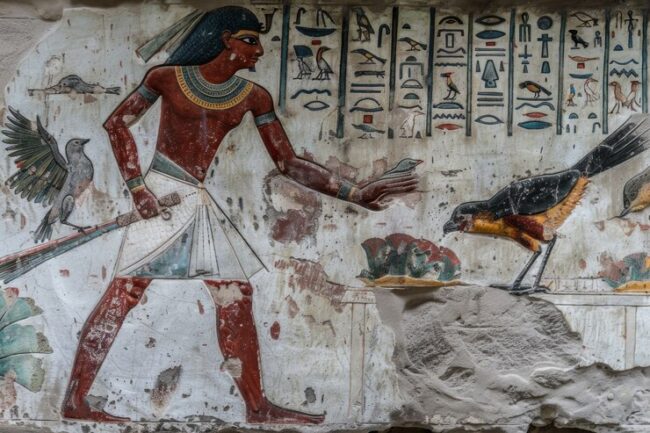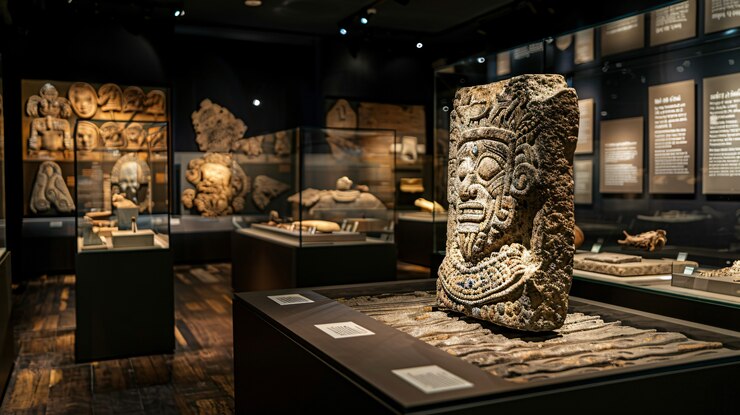Introduction to Ancient Artz
Ancient artz holds a mirror to the past, reflecting the vibrant cultures and identities that shaped civilizations long before our time. Each piece tells a story, capturing the essence of human experience through creativity and expression. From intricate pottery to grand sculptures, ancient art serves as both an artifact and a testament to societal values, beliefs, and traditions.
As we delve into this fascinating world of artistic heritage, we’ll explore how these creations not only beautify spaces but also weave together threads of identity across generations. Whether you’re an art enthusiast or just curious about cultural history, understanding ancient artz can deepen your appreciation for humanity’s shared journey. Let’s embark on this exploration together!
The Purpose of Ancient Artz
Ancient art served many purposes, acting as a window into the lives of those who created it. It was often used for religious or ceremonial functions, bridging the gap between humans and their deities.
These artworks conveyed stories, myths, and cultural values. They educated communities about their history and beliefs.
Additionally, ancient art provided aesthetic enjoyment. The beauty of craftsmanship captured emotions and inspired generations.
Some pieces were functional objects adorned with artistic designs that reflected social status or community identity.
Through these various roles, ancient art became a vital part of daily life in different societies. It helped individuals connect with their heritage while reinforcing shared identities within communities.
Different Forms of Ancient Artz
Ancient art manifests in a myriad of forms, each echoing the stories of its creators. Pottery stands out as one of the earliest expressions, with intricate designs often reflecting daily life and beliefs.
Sculpture holds a significant place too. From grand statues in temples to small figurines used in rituals, these creations capture both human emotion and divine reverence. The craftsmanship is astounding.
Moreover, frescoes and murals transform walls into vivid narratives. They tell tales of mythology, history, or spirituality through color and form.
Textiles also deserve recognition; woven artifacts carry cultural symbols that transcend time. Each thread tells a story of tradition and skill.
Ancient jewelry not only served ornamental purposes but conveyed status and identity through elaborate designs crafted from precious materials. This variety showcases how diverse artistic expression can be while deeply rooted in cultural significance.

Cultural Influences on Ancient Artz
Cultural influences seep into ancient art like colors on a painter’s palette. Each brushstroke or carving tells a story, reflecting the beliefs and values of its time.
Religion played a monumental role. Temples adorned with intricate sculptures often communicated the divine hierarchy. These artworks served as bridges between humanity and their gods.
Trade routes also shaped artistic styles. Cultures exchanged not only goods but ideas, leading to hybrid forms that blended techniques and motifs from far-flung lands.
Local customs and traditions added unique flavors to artistic expressions. Festivals inspired vibrant pottery designs, while rituals influenced textile patterns.
Moreover, nature was an omnipresent muse. Artists drew inspiration from their surroundings—mountains, rivers, and animals became symbols rich with meaning in various cultures.
Each piece encapsulated more than aesthetics; it was imbued with history, identity, and connection to community life at that point in time.
Examples of Ancient Artz from Different Cultures
Ancient art serves as a window into the diverse cultures that created it. From the intricate pottery of ancient Greece to the mesmerizing cave paintings found in Lascaux, each piece tells a story.
In Egypt, hieroglyphics engraved on tombs reveal beliefs about life after death. These symbols were more than mere decoration; they embodied spirituality and societal norms.
Meanwhile, the vibrant textiles of pre-Columbian civilizations show an extraordinary weaving technique. Each pattern carries deep meaning tied to their environment and traditions.
Asian cultures have also left their mark through sculptures like terracotta warriors from China. They reflect not only craftsmanship but military might and reverence for ancestors.
African tribal masks serve various purposes—from rituals to storytelling—fostering community ties while preserving heritage.
Each example highlights how ancient art continues to resonate, embodying cultural values and identity across time and space.
Evolution of Ancient Artz and Its Significance
The evolution of ancient art reflects the dynamic nature of human society. Starting from simple cave paintings, early artists communicated stories and emotions through symbols and colors. These works laid the foundation for future artistic endeavors.
As civilizations grew, so did their artistic techniques and materials. The introduction of pottery, sculpture, and textiles marked significant milestones in creativity. Each culture added its unique touch, often influenced by religion or mythology.
Ancient art served not just as decoration but also as a record of history. It captured moments that defined societies—battles won, gods worshipped, or daily life depicted with vivid detail.
Today’s understanding of ancient art enriches our appreciation for cultural heritage. Each piece offers insight into the values and beliefs held dear by those who came before us. It tells an ongoing story about humanity’s quest for expression across time and space.
How Ancient Artz Represents Cultural Identity
Ancient art serves as a mirror reflecting the values, beliefs, and customs of a culture. Each piece tells a story that transcends time. From intricate carvings to vibrant pottery, these artworks encapsulate the essence of identity.
Symbols often hold deep meaning within specific cultures. They convey spiritual connections or historical narratives passed down through generations. For instance, Native American totems represent clan lineage and community ties.
Moreover, ancient art can highlight societal roles and hierarchies. The depiction of deities in Egyptian tomb paintings showcases religious significance while reinforcing social structures.
As we explore these artistic expressions today, they continue to resonate with contemporary audiences. Ancient art is not merely relics; it’s an invitation into the lives and minds of our ancestors. Through understanding their creations, we gain insight into what shaped their worldviews and cultural identities over centuries.
Preservation and Impact of Ancient Artz in Modern Society
The preservation of ancient art is crucial for understanding our past. It serves as a window into the lives and beliefs of cultures long gone. Modern technology plays a vital role in this endeavor, allowing us to restore and conserve these treasures.
Museums worldwide showcase ancient art pieces, creating connections between generations. They educate visitors about historical narratives that shape cultural identities today.
In contemporary society, ancient art influences various fields like fashion, design, and even architecture. Artists draw inspiration from these age-old works to create modern masterpieces that resonate with traditional motifs.
Moreover, digital platforms have democratized access to ancient artworks. People can explore galleries virtually, fostering global appreciation for diverse heritages while ensuring their stories are preserved for future exploration. This blend of old and new highlights the timeless relevance of ancient art in shaping our collective identity today.
Conclusion: ancient artz
Ancient artz serves as a powerful lens through which we can view the past. Each piece tells stories of civilizations, beliefs, and traditions that shaped humanity.
These artworks are not merely relics; they reflect the essence of cultural identity. They connect us to our ancestors, reminding us of shared histories and values.
As we explore different forms and styles, it becomes clear how diverse human expression is. From cave paintings to intricate sculptures, each form reveals unique insights into societal norms.
Today, ancient artz continues to inspire contemporary creators. Its influence can be seen in modern designs, architecture, and even digital media.
Preserving these treasures ensures future generations appreciate their significance. Ancient artz will always hold an irreplaceable place in understanding who we are as a global community.
FAQ: ancient artz
Ancient artz offers a fascinating glimpse into the past, serving as a testament to human creativity and cultural expression. It reflects not only artistic techniques but also the beliefs, stories, and identities of different civilizations.
What is ancient artz?
Ancient artz refers to artworks created in historical periods that reflect cultural values and practices. This includes sculptures, pottery, paintings, and more from various cultures around the world.
Why is ancient artz important?
Ancient art provides insight into how people lived in different eras. It helps us understand their social structures, spiritual beliefs, and everyday life experiences.
How can we preserve ancient artz today?
Preservation involves careful restoration efforts by museums or institutions specializing in conservation. Climate control measures are also essential to protect artifacts from deterioration.
Where can I see examples of ancient artz?
Museums worldwide showcase collections of ancient artwork. Additionally, archaeological sites offer direct views of how these works were originally placed within their cultural context.
Does ancient art influence modern artists?
Absolutely! Many contemporary artists draw inspiration from themes found in ancient artworks. They explore similar motifs while incorporating modern techniques and materials.
Is there a specific type of ancient artwork that stands out most?
Different cultures have unique contributions; for example, Greek sculpture exhibits stunning realism while Egyptian hieroglyphs convey complex narratives about life after death.
The legacy of ancient art continues to shape our understanding of history and culture today. Its impact resonates through time as it fosters appreciation for diverse human expressions across ages.






